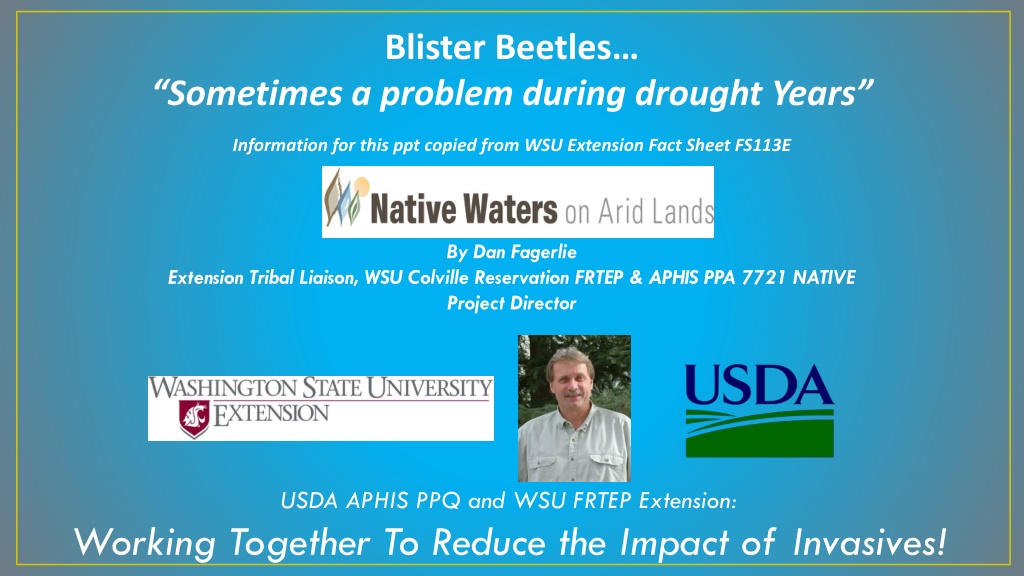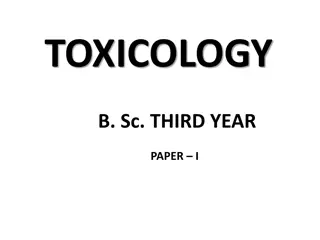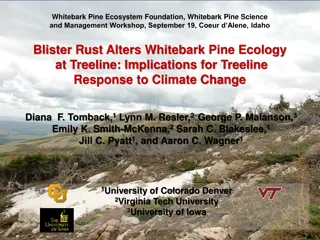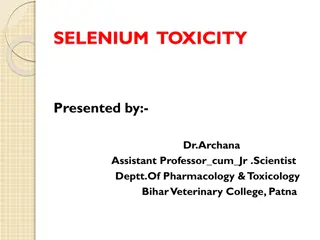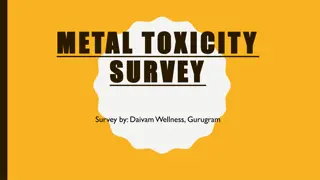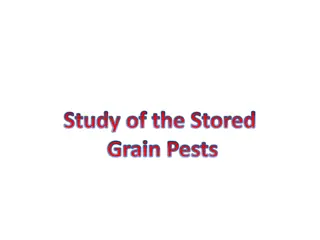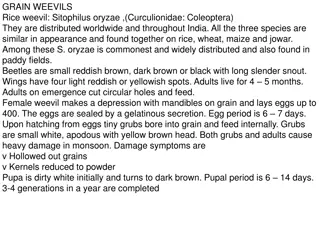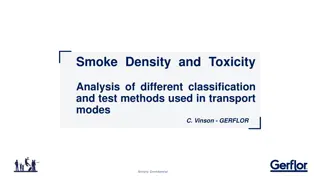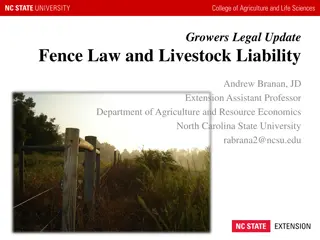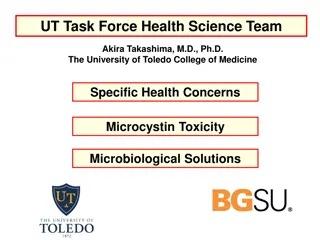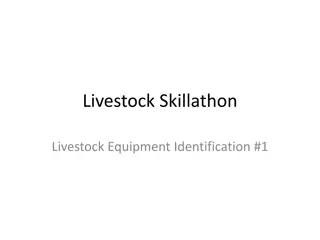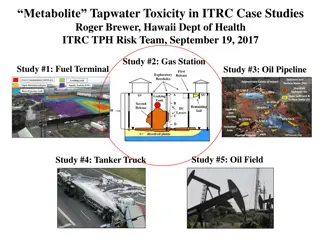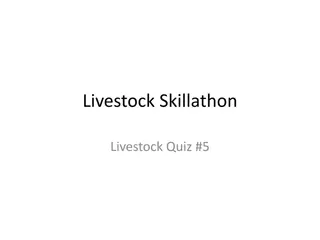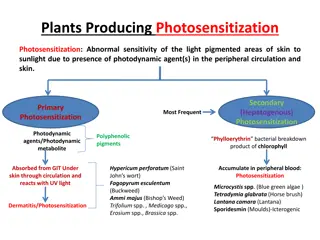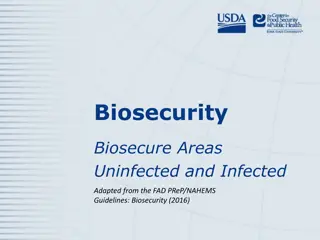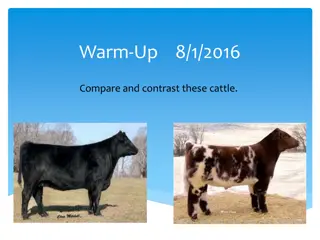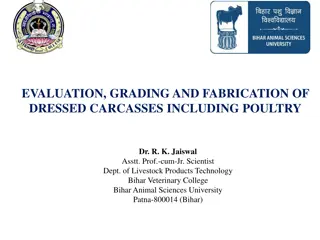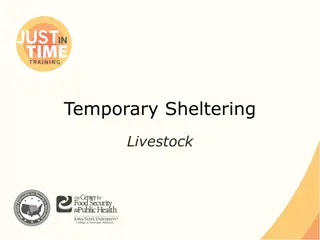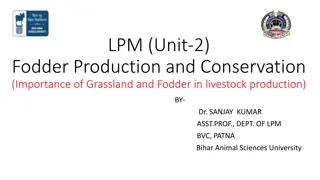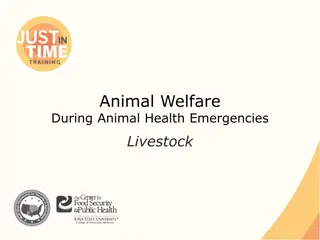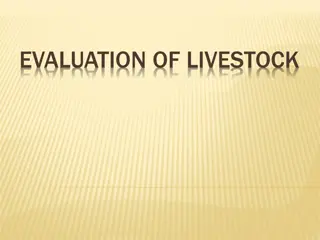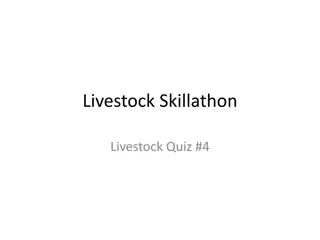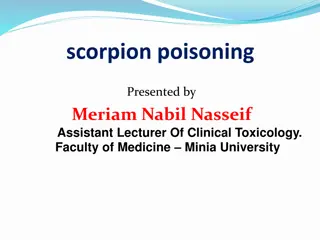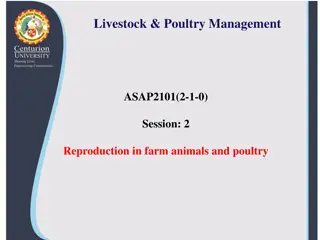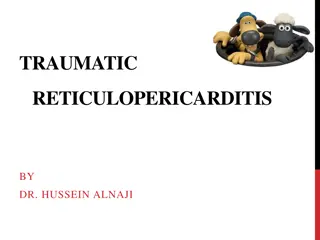Understanding Blister Beetles and Livestock Toxicity: Impacts and Management
Blister beetles are a biological control agent of grasshoppers but can become a problem, especially during drought years. This presentation discusses how blister beetles develop, their impact on plants and livestock, and the toxicity of cantharidin found in these beetles. Livestock, especially horses, are susceptible to cantharidin poisoning, which can be lethal. Recognizing symptoms and managing blister beetle populations are crucial for protecting plants and animals.
Download Presentation

Please find below an Image/Link to download the presentation.
The content on the website is provided AS IS for your information and personal use only. It may not be sold, licensed, or shared on other websites without obtaining consent from the author. Download presentation by click this link. If you encounter any issues during the download, it is possible that the publisher has removed the file from their server.
E N D
Presentation Transcript
Blister Beetles Sometimes a problem during drought Years Information for this ppt copied from WSU Extension Fact Sheet FS113E By Dan Fagerlie Extension Tribal Liaison, WSU Colville Reservation FRTEP & APHIS PPA 7721 NATIVE Project Director USDA APHIS PPQ and WSU FRTEP Extension: Working Together To Reduce the Impact of Invasives!
Blister Beetles are a Biological Control Agent of Grasshoppers Blister beetle outbreaks often follow significant grasshopper infestations Through autumn and winter, maturing larvae become less mobile and more grub-like in appearance, and they develop a bigger appetite for grasshopper eggs. Eventually, the larvae complete their development and pupate in the spring. So with increased Grasshoppers during a drought, we get increased Blister beetles sometimes accompanying them
Damage caused by Adult Blister Beetles: A) Epicauta puncicollis adults defoliating ornamental plants in a home landscape; B) Epicauta pruinose adults defoliating plants in a commercial potato crop in central Washington. Photo Source: Mike Bush, WSU Extension and Sally Hubbs, Washington State University.
Livestock Toxicity Many species of blister beetles produce a defensive substance called cantharidin in their body fluids. This substance is toxic to people, horses, cattle, sheep, goats, dogs, cats, rabbits, and rats. Surface exposure to cantharidin can cause skin irritation and lead to blistering. Of far greater concern is internal exposure to cantharidin, particularly by livestock that have consumed beetle-contaminated hay. Cantharidin can irritate the gastrointestinal and urinary tracts of animals, and lead to poisoning and even death.
Horses are most susceptible to the toxin, and as little as four to six grams of dried beetles trapped in hay used as feed can be lethal to horses. Symptoms to watch for include blisters on the tongue and mouth, abdominal pain, depression, anorexia, sweating, increased heart and respiratory rates, increased rectal temperature, frequent drinking of small amounts of water (sometimes livestock will merely submerse their noses in water), diarrhea, problems with urination, or blood discharged
Managing Blister Beetles For producers of hay and pasture crops, the presence of blister beetles in livestock feed necessitates management strategies. The first cuttings of hay are likely to escape infestation with blister beetles, as the beetles emerge during the summer months in the Pacific Northwest. It is recommended to use the first cutting of alfalfa as feed for horses, which are particularly susceptible to cantharidin poisoning. Later in the season, cutting hay before bloom will decrease the likelihood of feed contamination because beetles primarily infest hay crops in bloom. For later cuttings, it may be advantageous to scout perimeter rows of hay crops for the presence of blister beetles just prior to harvest, particularly in fields with a history of blister beetle or grasshopper infestations. In infested fields, it is advisable to harvest the hay with the conditioner open so the beetles can escape during harvest. Producers should avoid harvesting perimeter areas when scouting has found blister beetles. Control: According to the Pacific Northwest Insect Management Handbook, perimeter applications of carbaryl or pyrethroids (lambda-cyhalothrin, gamma-cyhalothrin, or zeta-cypermethrin) can be used to manage adult beetles when they are present. Beetles killed by insecticides before harvest should fall to the ground. (Check your local laws and regulations on allowable control options in your state)
Blister Beetle Resources: https://extension.sdstate.edu/check-alfalfa-blister-beetle-activity http://animalrange.montana.edu/documents/extension/MT200209AG.pdf https://s3.wp.wsu.edu/uploads/sites/2071/2013/07/Blister-Beetles_FS113E.pdf
Dan Fagerlie FRTEP Extension-NATIVE 509 690 0009 fagerlie@wsu.edu USDA APHIS PPQ and USDA WSU Colville Reservation FRTEP Extension: Working Together To Spread the Word on Invasives To Help Reduce Their Impact!
